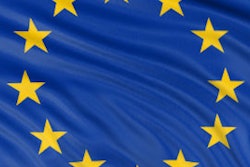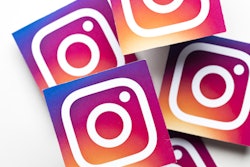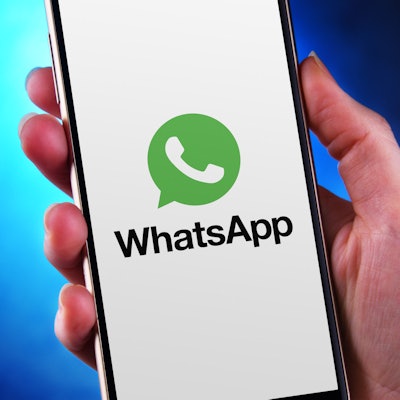
Instant group messaging via WhatsApp was by far the most popular means of communication among radiologists during the first wave of the pandemic, Spanish researchers reported at ECR 2021, but they expressed deep concern about data security issues.
"Most of the medical information, hospital management regulations, radiological cases, and occupational safety recommendations were shared via WhatsApp," noted Elena Bello Martínez, Dr. Marta Pérez Rubiralta, and colleagues from Bellvitge University Hospital in Barcelona, Spain. "However, relevant information was only a small fraction of all the information sent and users were only partially satisfied with this type of communication."
The team's study confirms the need for a professional messaging tool that can share medical information, hospital rules, workflow details, and patient data, including radiological images, in an effective way that is compliant with the European Union (EU) General Data Protection Regulation (GDPR), they stated in an e-poster at ECR.
"Importantly, we should be aware of patient data protection when sharing radiological cases and patient information," the authors wrote. "WhatsApp does not comply with the GDPR, and any information that can identify a patient should not be sent using this tool, including electronic medical record IDs."
Effect of COVID-19 on communication
Communication within a radiology department usually involves various channels, including group meetings to share important news, interdisciplinary meetings to share novel medical findings, and conversations between colleagues to discuss cases.
"The COVID-19 pandemic, however, forced radiologists to limit any contact with their superiors and peers and, at the same time, share a vast amount of new information fast and efficiently," Bello Martínez and colleagues said. "During the first wave, safety precautions for physicians and patient protocols changed continuously as the number of COVID-19 cases increased. In addition, radiologists needed reliable and updated medical information to know what they were dealing with."
The group evaluated how 17 members of an emergency radiology team in a tertiary hospital communicated from 1 March to 20 April 2020. The main channels studied were institutional email, phone calls, physical and virtual meetings, and instant workgroup messaging.
The figure below shows the number of messages sent via WhatsApp during the first wave of the pandemic. Traffic increased by 2,444% during this period, compared with the previous six months, from an average of two messages a day to 49 messages, and it peaked at 353 on 31 March -- close to the peak of new cases of COVID-19 in Spain.
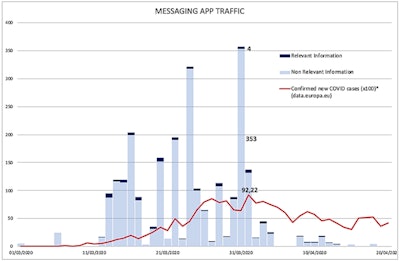
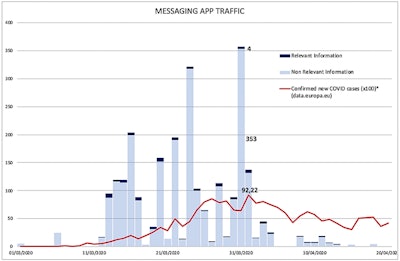
Correlation of the number of messages sent via WhatsApp during the first wave of the pandemic with the number of new cases of COVID-19. Courtesy of Bello Martínez et al.
The table below shows that 71% (91/129) of relevant information was transmitted via WhatsApp, which was the main form of communication for sharing radiological cases, medical information, occupational safety rules, and hospital management regulations.
 Volume of information received by each radiologist between 1 March and 20 April 2020. Each input was classified according to the means of communication through which it was shared and the type of information it represented. Courtesy of Bello Martínez et al.
Volume of information received by each radiologist between 1 March and 20 April 2020. Each input was classified according to the means of communication through which it was shared and the type of information it represented. Courtesy of Bello Martínez et al.Institutional email came in second place when transmitting relevant information, with 28% (36/129). This tool was used to transmit 46% of hospital management changes such as new flow of patients, new diagnostic workflows for COVID-19 patients, occupational safety issues, and work-from-home recommendations.
"We hypothesize that changes that needed to take place urgently, in the following days, were transmitted via WhatsApp, and those of a less urgent matter were sent via institutional email," the authors stated. "Instant messages via WhatsApp were more likely to travel faster from different chains of command to the members of our team."
On the other hand, WhatsApp was the only communication tool that shared nonrelevant information, which was most of the information sent via this method: 96% (2,381/2,472). In the study, nonrelevant information accounted for a message that did not transmit a change of the status quo or provided knowledge of the pandemic. Most of this information comprised group discussions regarding relevant information, which is expected when physical meetings are restricted.
"Only 65% of our members thought that most of the relevant information was transmitted via WhatsApp," the authors pointed out. "Additionally, only 59% of our members regarded WhatsApp as the most effective way to communicate with colleagues and superiors, while 41% preferred email or phone calls to do so. The average satisfaction of the team members was 3.3/5."
This perception might be due to the vast amount of nonrelevant information that was intermixed with relevant information, making it difficult to retrieve or organize information according to its content, they added.
Zoom, Teams, and Google Meets
In the survey, 60% of respondents said they would prefer to use a professional chat tool in the future, and 47% wanted to have more virtual meetings. The pandemic has seen an exponential use of virtual meeting platforms such as Zoom, Microsoft Teams, or Google Meets, and currently most interdisciplinary meetings at the hospital use one of these platforms, Bello Martínez and colleagues said.
Medical information, including radiological information related to COVID-19, was transmitted mainly via WhatsApp and referred to external links. The sources of these links were medical or radiological societies and journals (43%), information published by other hospitals (32%), or of unknown origin (21%).
Hospital radiological cases were shared only through WhatsApp as images (mainly x-rays), videos (mainly CT), and, in a minority of cases, electronic medical record IDs. Any other patient information was omitted.
"Again, WhatsApp was the best tool we had to share our own hospital cases during this period, due to its ability to share cases in real-time and allow everyone to discuss them," the authors wrote. "However, mobile devices should not be used as a primary interpretation of radiological examinations due to potentially limiting factors. This limits the value of sharing images through messaging apps, especially for second opinion evaluations."
The study confirms the need for a messaging app that is GDPR-compatible. New applications such as Siilo or web platforms such as Cmrad.com make it possible to share patient data and radiological images in a GDPR-compatible way.
"One limitation in our study was the fact that we were only able to monitor group communications. One-to-one conversations between colleagues or personal information gathering was not included," they concluded.
Editor's note: The number of the ECR e-poster is C-10192, and you can access it via the EPOS section for the congress.




